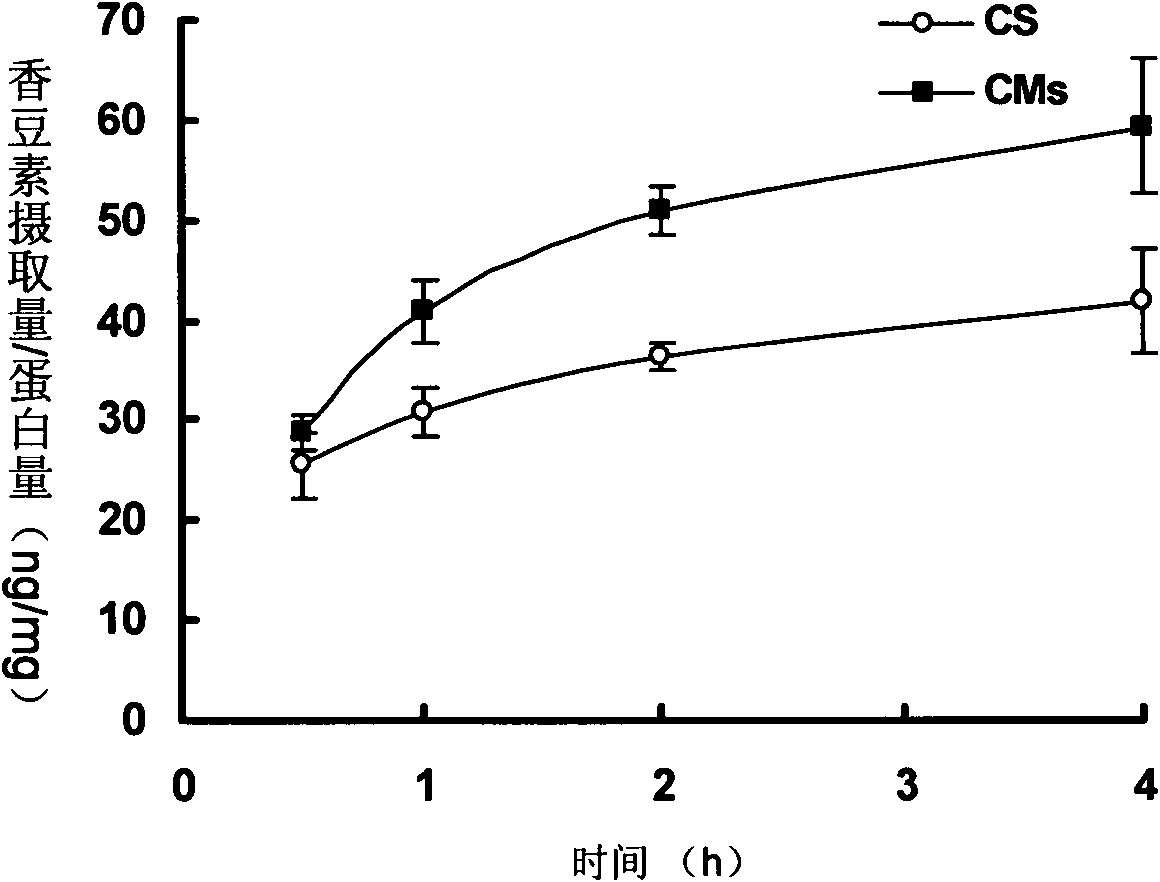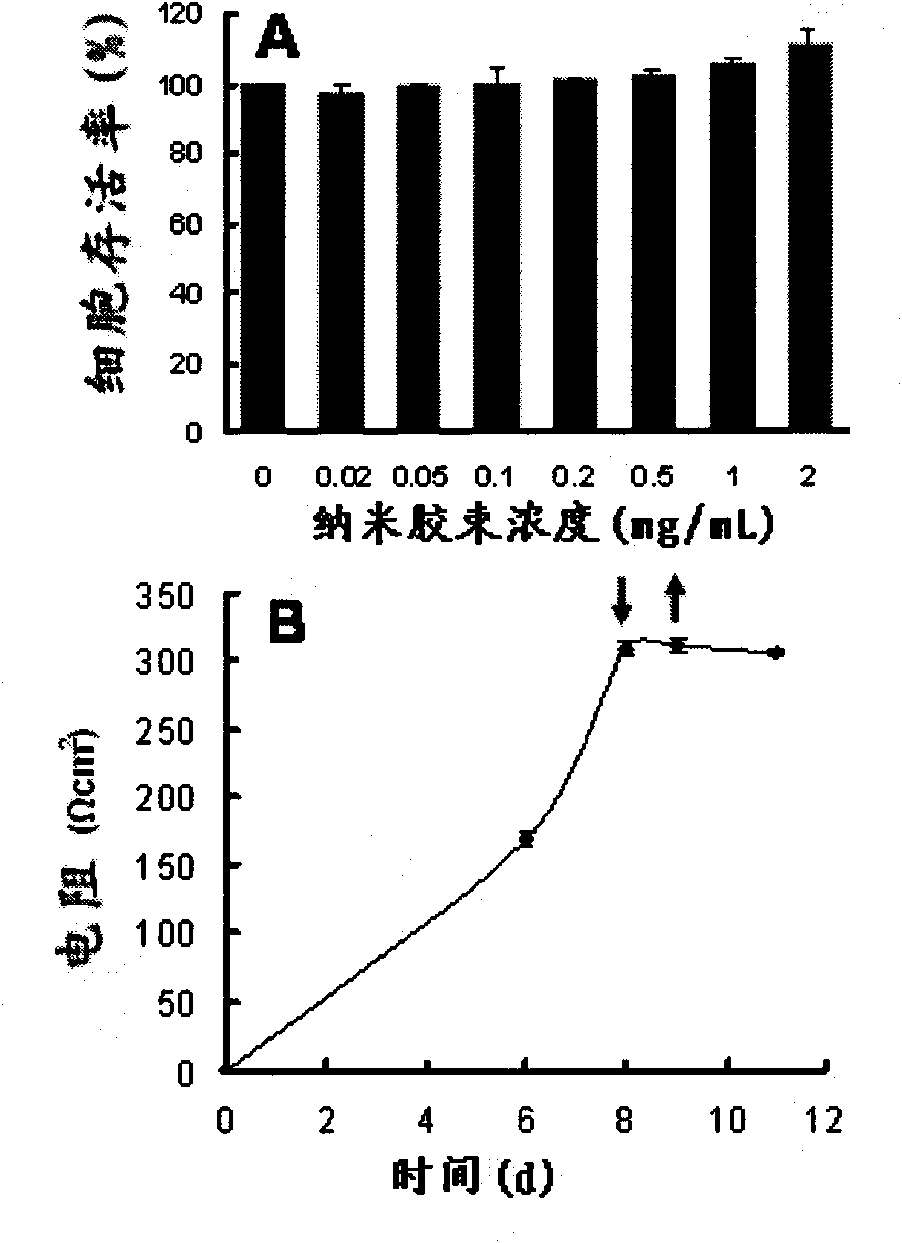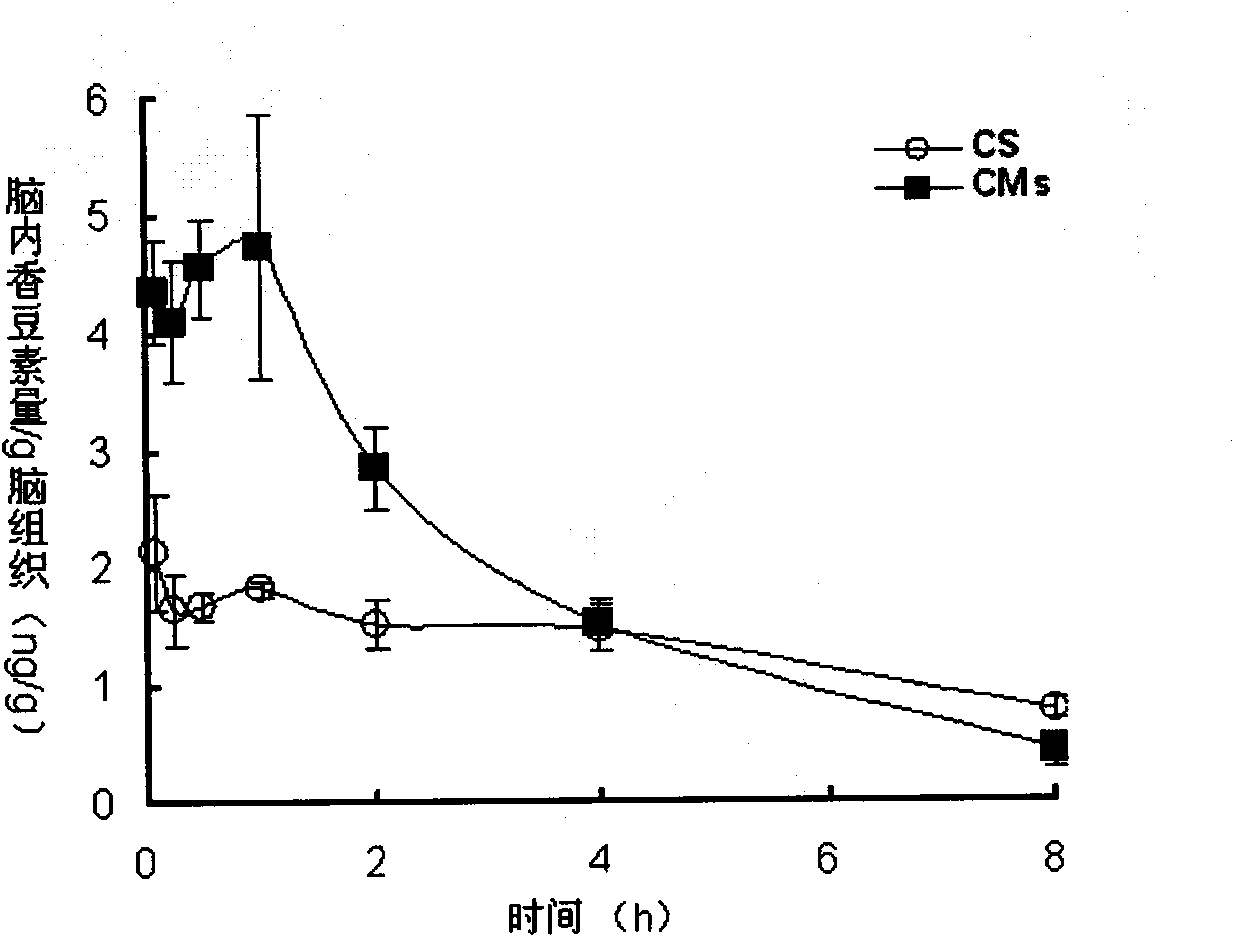Phosphate-based drug delivery system for intracerebral drug delivery
A delivery system and polyphosphate technology, applied in drug delivery, pharmaceutical formulations, etc., can solve problems such as inability to meet multi-functional modification and potential safety hazards, and achieve the effect of meeting the requirements of multi-functional modification and high safety
- Summary
- Abstract
- Description
- Claims
- Application Information
AI Technical Summary
Problems solved by technology
Method used
Image
Examples
Embodiment 1
[0072] Example 1: Since the hydrophobic segment of the block copolymer only plays the role of encapsulating hydrophobic drugs and does not affect the surface properties of the finally formed nanomicelles, this example and the following examples are represented by PPE-PCL. The brain-targeting performance of polyphosphate-based amphiphilic block copolymers was investigated.
[0073] In order to prove that the micelles prepared by PPE-PCL can increase the distribution of drugs into the brain, nanomicelles loaded with fluorescent dye Coumarin-6 (purchased from Acros, USA) were prepared, and its toxicity and brain targeting were investigated. ability.
[0074] 1) Preparation of drug nanomicelles loaded with fluorescent dye coumarin-6
[0075] Using PCL-OH as a macroinitiator, the ring-opening polymerization of 2-ethoxy-1,3,2-dioxaphospholane was initiated in anhydrous THF, and purified by ether precipitation to obtain R 1 is ethyl, R 2 Hydrogen polymer PCL-PPE-OH. 40 mg of PCL-...
Embodiment 2
[0082] Example 2: In order to prove that functionalized nanomicelles modified by polyphosphate-based brain-targeting ligands can promote the distribution of drugs in the brain, the micelles were prepared and used for intracerebral administration. Because the connection mode of each targeting ligand and micelles has no effect on the targeting effect in the brain, and there is no significant difference in the essence of increasing drug distribution in the brain by different ligands, so this example uses maleimide groups and transgenic Taking the connection of ferritin as an example, the intracerebral drug delivery performance of functionalized nanomicelles modified with polyphosphate-based brain-targeting ligands was investigated.
[0083] 1) Thiolation of transferrin
[0084] Dissolve transferrin (Sigma) in HEPES buffer at pH 7.4 to obtain a 1 mg / mL solution, add 100 μl of 0.1 M hydroxylamine (Sigma) per mg of protein, thiolate transferrin for 2 h, and then carry out Purified ...
Embodiment 3
[0095] Example 3: Since the solubility of teniposide and paclitaxel are quite different, the preparation method of the nanomicelle according to the present invention is also slightly different. In order to illustrate the preparation method of brain-targeted nanomicelles loaded with teniposide, this example uses an anti-transferrin receptor antibody as an example to modify PCL-PPE-Mal with a brain-targeted ligand to illustrate its preparation method. The types of side chains of the hydrophobic segment and the hydrophilic segment do not affect its preparation method.
[0096] 1) Thiolation of anti-transferrin receptor antibody
[0097] Dissolve anti-transferrin receptor antibody (Wuhan Boster) in HEPES buffer at pH 7.4 to obtain a 1 mg / mL solution, add 100 μl of 0.1M hydroxylamine per mg of protein, add anti-transferrin receptor The antibody was thiolated for 2h, and then purified by ultrafiltration. The degree of sulfhydrylation of lactoferrin was determined by Ellman's reagent...
PUM
 Login to View More
Login to View More Abstract
Description
Claims
Application Information
 Login to View More
Login to View More - R&D
- Intellectual Property
- Life Sciences
- Materials
- Tech Scout
- Unparalleled Data Quality
- Higher Quality Content
- 60% Fewer Hallucinations
Browse by: Latest US Patents, China's latest patents, Technical Efficacy Thesaurus, Application Domain, Technology Topic, Popular Technical Reports.
© 2025 PatSnap. All rights reserved.Legal|Privacy policy|Modern Slavery Act Transparency Statement|Sitemap|About US| Contact US: help@patsnap.com



